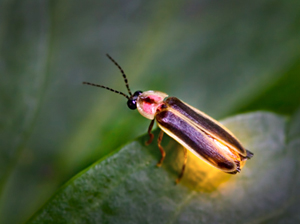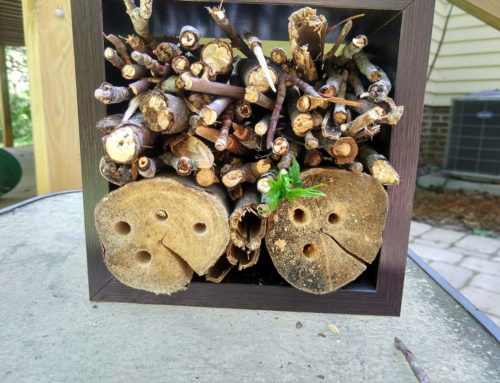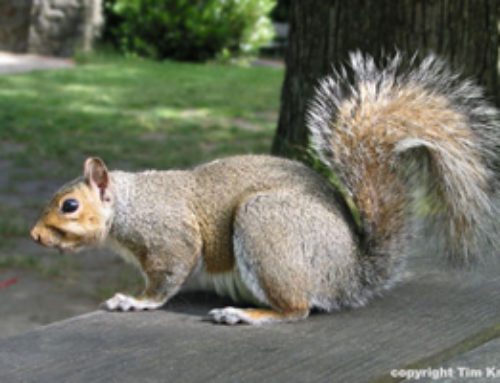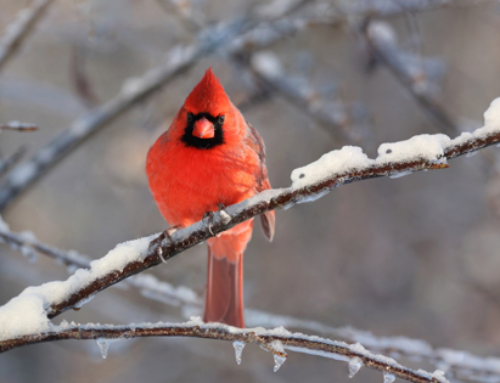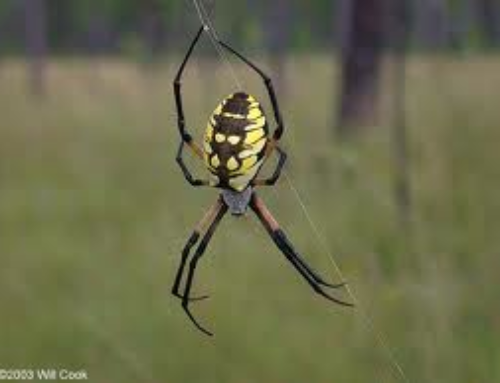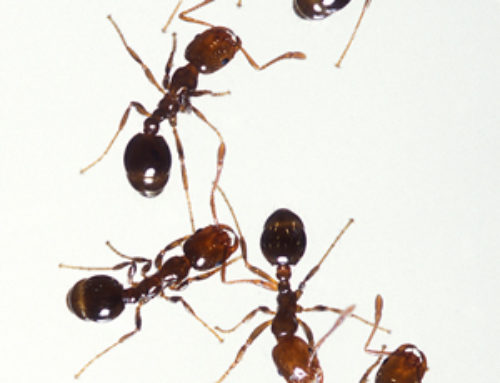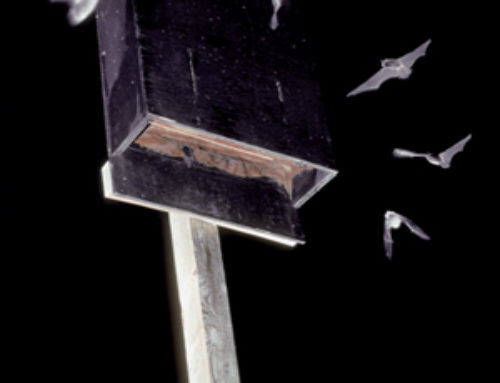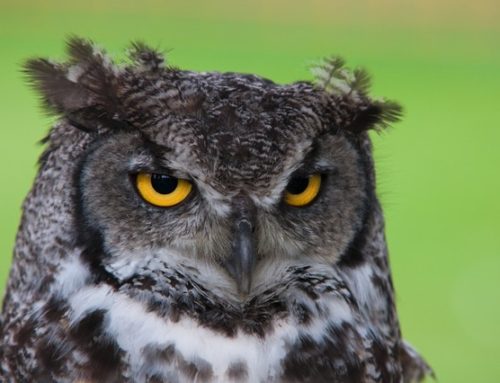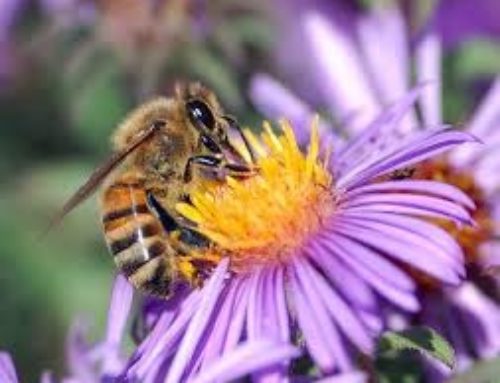Firefly. Lightning bug. Call them whatever name you want, these insects (actually a type of beetle, but then again, who's counting?) are an indispensable part of summer across the United States. Children make games of catching them, and for adults, nothing sets the mood for a romantic outdoor dinner like a swarm of glowing fireflies.
A firefly's light is the result of a chemical reaction inside its body. Two chemicals, luciferin and luciferase, are secreted by special organs in the insect's abdomen, and when they collide they produce a soft yellow light. This light is the most efficient in the world: 100% of the energy used in its creation is converted to light, as opposed to only 10% in a standard light bulb. The fireflies that you see flying about at night are males, using their lights to attract mates. However, they are not the only ones who glow.
The reactive chemicals fireflies use to glow have their practical uses for humans as well: for example, electron detectors built using these chemicals search for life on other planets, and detect food spoilage and crop failure.
Firefly eggs are laid underground and glow with a dim greenish-yellow light. So do the larvae, sometimes called glowworms. The glowworms overwinter, then spend about a week as pupae before emerging as adults and flying off to seek mates. Some fireflies, however, are the femme fatales of the insect world. Their males imitate the light signals of other firefly species' females in order to attract their males. Once the male firefly has gotten close enough, the fake female attacks him and eats him. Other than this, fireflies typically do not eat as adults. Those that do feed mainly on smaller insects, while glowworms live underground and eat worms, slugs, and snails. Fireflies themselves aren't eaten by very many other animals, since their bodies contain poisonous chemicals.
Fireflies are particularly fond of moist, humid areas, so it's no surprise they are common in summer. On any given night in Davidson, one can see several dozen fireflies twinkling a few feet above the ground like miniature stars.
Unfortunately, fireflies are in trouble. One of the biggest threats to their long-term survival is a phenomenon called "light pollution." When too much artificial light is left on in the middle of the night, nocturnal animals that rely on the stars to navigate can become disoriented. Fireflies are affected too, even though they don't navigate by the stars. Instead, light pollution blocks out their light signals and makes it difficult for them to find mates and therefore reproduce. Even car headlights can disrupt fireflies' displays. Synchronous fireflies often go out of synch when a car drives by with its headlights on.
To help fireflies, don't leave on outside lights at night. Light pollution doesn't just hurt fireflies, of course; it is also bad for other animals that rely on the cover of darkness to survive. Furthermore, many insects are attracted to artificial lights, flying close to the light bulbs and killing themselves. Reducing light pollution, then, is not merely an aesthetic decision. It also saves the lives of many animals.
Whether you call them fireflies, lightning bugs, or something else entirely, these fascinating insects are a timeless symbol of the summer months. We should hope they stay that way. The experience of summer evenings would be very different without them.


